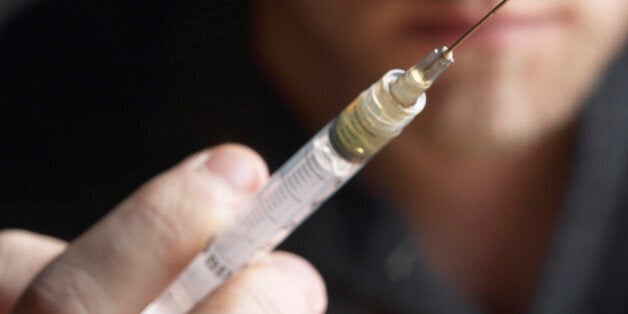
Earlier this month Durban, South Africa hosted the 21st International AIDS Conference, bringing together thousands of people working to end AIDS globally. Held every two years, the conference is critical for keeping the fight against HIV on the world's agenda, and for working towards the Sustainable Development Goal of ending AIDS by 2030. Yet despite the high visibility that the conference generates, those working on HIV and injecting drug use were sorely disappointed by the lack of attention given to drug use issues, including harm reduction. More worryingly, this omission from the AIDS conference programme reflects the increasingly invisibility of drug use issues within the wider global HIV response.
People who inject drugs are considered a 'key population' in the global HIV response - meaning that ending AIDS among them is vital to ending AIDS everywhere. Harm reduction, which includes interventions such as needle and syringe exchange and opioid substitution therapy, is the most cost effective way to achieve this. Research recently conducted by Harm Reduction International and the Burnet Institute found that an annual investment of USD 2.5 billion until 2030 - amounting to just 2.5% of the USD 100 billion that is spent each year in the largely ineffective "war on drugs" - could cut new HIV infections among people who inject drugs by a phenomenal 80%. An investment of USD 7.5 billion would go even further - effectively ending AIDS among people who inject drugs.
But harm reduction remains grossly underfunded. In fact, if its scale-up continues at the current pace, it will be 2026 before every country which reports injecting drug use has even one programme in place. It is therefore no surprise that the UN target to halve transmission of HIV among people who inject drugs by 2015 was not only missed, but missed by a staggering 80%. Meanwhile, the new UN Political Declaration on HIV and AIDS, adopted just two months ago in New York, has no target at all for people who inject drugs.
This fragile commitment to harm reduction is also evident within UNAIDS. A recent report by the joint programme set up to lead the global HIV response, 'Do No Harm', suggested that just USD 1.5 billion would be enough to "fast track" the HIV response among people who inject drugs - a figure that falls far short of the HRI/Burnet estimates. This is because it covers only resources required in low- and middle-income countries, and assumes that necessary spending in upper-middle income countries will be covered by domestic funds, despite this being highly implausible in most cases. By approaching resource needs in this way, UNAIDS have excluded more than three quarters of people who inject drugs, with those left behind living in countries such as the US, Russia, Greece, Hungary, Bulgaria, Thailand, China, Mauritius and Belarus - all countries in which harm reduction programmes are either non-existent or severely limited. UNAIDS does not call on these governments to act - and by failing to do so, absolves them of responsibility and accountability.
Just a month ago, Harm Reduction International and two dozen other harm reduction, drug user and human rights organisations wrote to the UNAIDS Executive Director Michel Sidibe to voice our collective concern about these figures.
This week, we have found ourselves called upon to write again, after a UNAIDS decision to cut short its funding for the UNODC HIV Programme. In doing so, they are shutting down the last dedicated expertise on the links between HIV, drugs, criminal justice and prisons in the UN system, making it impossible to meet the Sustainable Development Goal of ending AIDS by 2030.
Instead, this admirable pledge, which comes with a promise to 'leave no-one behind', will remain no more than a slogan. Donor governments and institutions have already withdrawn support for harm reduction and now UNAIDS' political leadership on drug related issues is dwindling. People who use drugs are being left behind and only a major injection of political courage, backed up by a redirection of the necessary resources away from drug control and into harm reduction, will change this.
